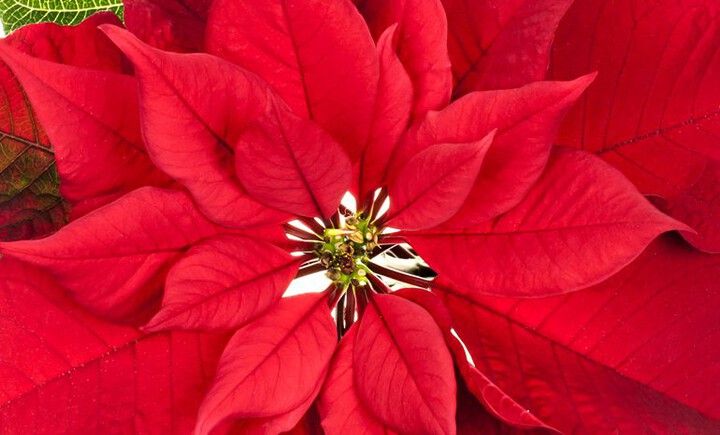
The December birth flower is the narcissus. This beautifully bold bloom is symbolic of good wishes, faithfulness, and respect. The narcissus is not to be confused with the daffodil, as despite also being a type of narcissus, the daffodil is, in fact, March’s birth flower.
What flower represents December?
Although most narcissus flowers are spring blooms, there are several species that flower in the winter months, including the picture-perfect paperwhite narcissus. This bloom is also an appropriate flower to gift to those celebrating a birthday in December.
Growing paperwhites
When growing the paperwhite narcissus, use a bowl or shallow container that measures between three and four inches deep and which has no drainage holes. Fill this with crushed rocks, pebbles, or any other decorative stones that take your fancy. Place your paperwhite bulbs into the container and push them down into the stones. This will allow the tips to stay upright. Add water until it just covers the bottom of the bulbs and watches in admiration as your December birth flowers thrive.
How to take care of Narcissus flowers
Narcissus blooms comprise of species including daffodils, jonquils, and paperwhites. Paperwhites are traditionally gifted as December birth flowers. These blooms can be either yellow or white, and flower briefly in the spring. They’re often the first blooms to blossom after the cold months of winter. Most narcissus varieties grow in the United States in zones five to eight (known as zones of hardiness). They thrive in these conditions because they require a little winter chill in order to force the bulbs into spring bloom. You can also invest in no chill or low chill varieties if your location requires this, and species such as paperwhites can grow in milder climates. The correct care will enable the bulb to replenish it’s nutrient and energy store prior to entering dormancy. This results in an abundance of beautiful blooms the following year.
Tried and tested methods
There are a number of growing methods that should enable your plants to thrive…
Scatter around half a pound of bulb fertilizer (around 225 grams) over every 25 square feet of the ground you have placed narcissus bulbs in. When the stems develop in spring, apply the fertilizer around the base of the plants. You should take care to avoid spraying the foliage.
Water the bulbs when they are vigorously growing in the spring. Allow up to one inch of water per week during the dry months and only water if the top two inches of soil is dry to the touch.
Remove old flower heads after they completely flower. Eliminate the foliage and stems after they yellow and die back naturally. This usually occurs around six weeks after flowering.
Dig up the bulbs every three or four years in the autumn. This is normally six weeks before the first signs of frost. Loosen the soil using a handheld cultivating fork, taking extra care not to damage the bulbs then remove them from the loosened soil.
Separate the bulbs using a twisting motion and dispose of any damaged or diseased bulbs, only saving the healthiest for replanting.
Replant the narcissus bulbs in well-drained soil in a sunny spot. For best results, plant each bulb at a depth twice its length, pointed side up. Place the bulbs approximately six inches apart.
Spread two inches of mulch over the bulb bed after the first frost. This will help to provide soil insulation. Gradually remove the mulch each spring.
History of the December birth flower
Asides from its pretty appearance; the December birth flower boasts a rich history. It was initially a native of the Mediterranean before being taken to Asia, where it became widely cultivated in China. From then on, the narcissus made its way to Europe via numerous was colonists. Its next stop was North America. Today, the narcissus is essentially cultivated in Great Britain, The Channel Isles and Holland.
Narcissus Meanings and Symbolism
The narcissus flower’s name originates from Greek mythology. Narcissus was a young hunter celebrated for his magnetism and good looks. He was so striking, that even he was infatuated by his appearance. One day, when admiring his own reflection in a nearby pond, he leaned in to take a closer look. Unfortunately, he lost his balance, fell in and drowned. This is one of the reasons the narcissus flower is symbolic of vanity in Western cultures.
However, in other cultures and societies around the world, the narcissus boasts an array of different meanings, some of which include:
According to the Victorian ‘language of flowers’ gifting someone, a narcissus means that you are informing them that they are ‘the only one’.
In Chinese culture, the narcissus embodies the Chinese New Year as it is one of the first blooms to flower in the spring. It is also a symbol of prosperity and good fortune for the coming year, which makes it a great gift to give those you wish only successes.
In Kurdish culture, the narcissus is an indication of the New Year. The narcissus flower has become a sign for a number of cancer societies around the world as it is also seen as a symbol of hope.